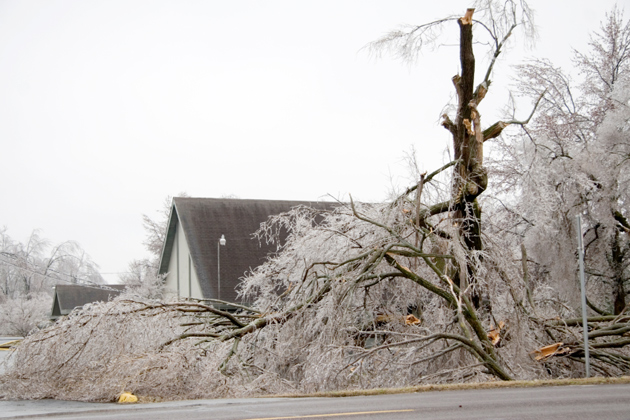In Hot Topics posts, UConn experts comment on current events and issues unfolding in the news.
After a devastating storm last weekend that delivered a foot of snow in many parts of the state, felling branches and trees and leaving entire communities without power, UConn economist Fred Carstensen takes a look at the potential impact on the state’s economy.
Carstensen is a professor of economics and director of the Connecticut Center for Economic Analysis at UConn.
Carstensen says the effects of the storm “will seep through the economy in hundreds of subtle ways.”
“It could take as long as two years to recover fully,” he says. The damage done by the storm, he adds, “represents a dead loss to the economy; resources were consumed that could have been used for productive purposes.”
While tree trimming businesses, electricians, and generator manufacturers are benefiting from the storm, homeowners are bearing the brunt of the storm’s damage, Carstensen says, and this will have a major impact on the state’s economy over the longer term.
He warns that stores can expect lower Christmas sales, especially on big-ticket items; restaurants will see less demand for meals; and car sales will likely plummet.
“All that money will be taken away from everything from your Christmas budget to appliance purchases to going out to eat.”
And with discretionary spending reduced, sales tax collections will ultimately be lower than they would otherwise have been – over an extended period of time.
Carstensen does the math: Across 800,000 customers who lost power, say half incur significant costs. That’s 400,000 people. If each simply incurred $100 in costs, that would take $40 million out of the economy. If each incurred expenses of $1,000 – which is more likely – that would take $400 million from the economy.
Unfortunately, says Carstensen, the state had not had time to digest the lessons from Tropical Storm Irene.
With an estimated quarter of a billion dollars’ worth of damage to the state from Irene, and a much larger bill for last weekend’s storm, he says, “we could be looking at an aggregate bill of $2 billion for the state. That’s 1 percent of our annual output in Connecticut.
“Going forward,” he says, “what’s really important is to figure out policies and investments to minimize the likelihood of this scale of disruption in the future.”
Contact information for members of the media:
Fred Carstensen, professor of economics
College of Liberal Arts and Sciences
Phone: 860-305-8299
Email: Fred.Carstensen@uconn.edu



